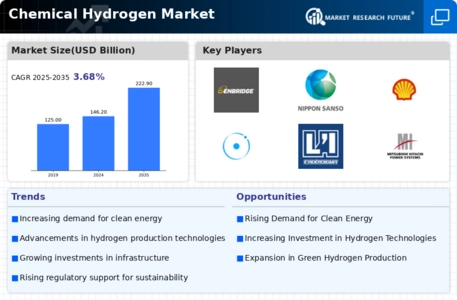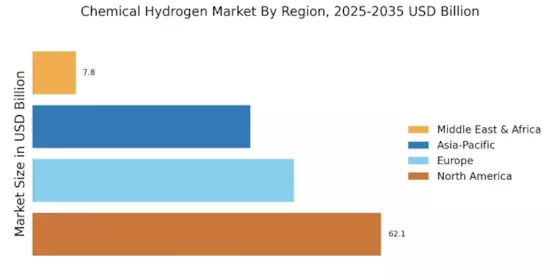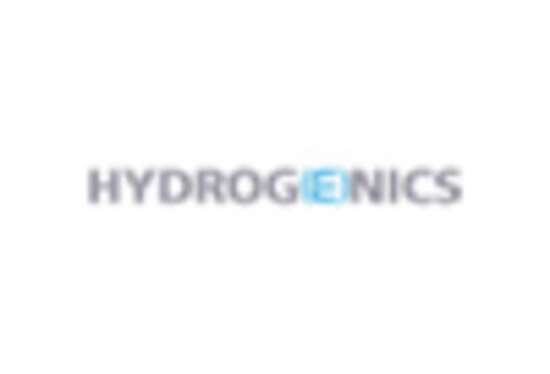Government Policies and Incentives
Government policies and incentives are crucial drivers for the Chemical Hydrogen Market. Many countries are implementing supportive frameworks to promote hydrogen adoption, including subsidies, tax incentives, and research funding. For example, the European Union has set ambitious targets for hydrogen production and usage, aiming for 10 million tons of renewable hydrogen by 2030. Such initiatives not only encourage investment in hydrogen technologies but also foster collaboration between public and private sectors, thereby accelerating the growth of the Chemical Hydrogen Market.
Growing Interest in Hydrogen Fuel Cells
The Chemical Hydrogen Market is witnessing a growing interest in hydrogen fuel cells, particularly in the transportation sector. Fuel cell vehicles (FCVs) are gaining traction as a clean alternative to conventional internal combustion engines. According to recent data, the number of hydrogen fuel cell vehicles on the road is projected to exceed 1 million by 2025. This trend is likely to drive demand for hydrogen as a fuel source, further propelling the Chemical Hydrogen Market as manufacturers ramp up production and infrastructure to support this transition.
Rising Demand for Clean Energy Solutions
The Chemical Hydrogen Market is experiencing a notable surge in demand for clean energy solutions. As nations strive to meet stringent environmental regulations and reduce carbon emissions, hydrogen emerges as a viable alternative to fossil fuels. The International Energy Agency indicates that hydrogen consumption could reach 500 million tons by 2030, driven by sectors such as transportation and industrial applications. This increasing demand for hydrogen as a clean energy source is likely to propel the Chemical Hydrogen Market forward, as companies invest in production technologies and infrastructure to meet this growing need.
Increased Investment in Hydrogen Infrastructure
Investment in hydrogen infrastructure is a critical factor influencing the Chemical Hydrogen Market. As the demand for hydrogen grows, the need for a robust infrastructure to support production, storage, and distribution becomes paramount. Recent reports suggest that investments in hydrogen infrastructure could reach USD 300 billion by 2030. This influx of capital is expected to facilitate the establishment of hydrogen refueling stations and pipelines, thereby enhancing the accessibility and viability of hydrogen as an energy source, which in turn will bolster the Chemical Hydrogen Market.
Technological Advancements in Hydrogen Production
Technological innovations are playing a pivotal role in shaping the Chemical Hydrogen Market. Advances in electrolysis, steam methane reforming, and biomass gasification are enhancing the efficiency and cost-effectiveness of hydrogen production. For instance, the development of proton exchange membrane (PEM) electrolyzers has significantly improved the scalability of hydrogen production from renewable sources. As these technologies mature, they are expected to lower production costs and increase the competitiveness of hydrogen against traditional energy sources, thereby stimulating growth in the Chemical Hydrogen Market.


















Leave a Comment